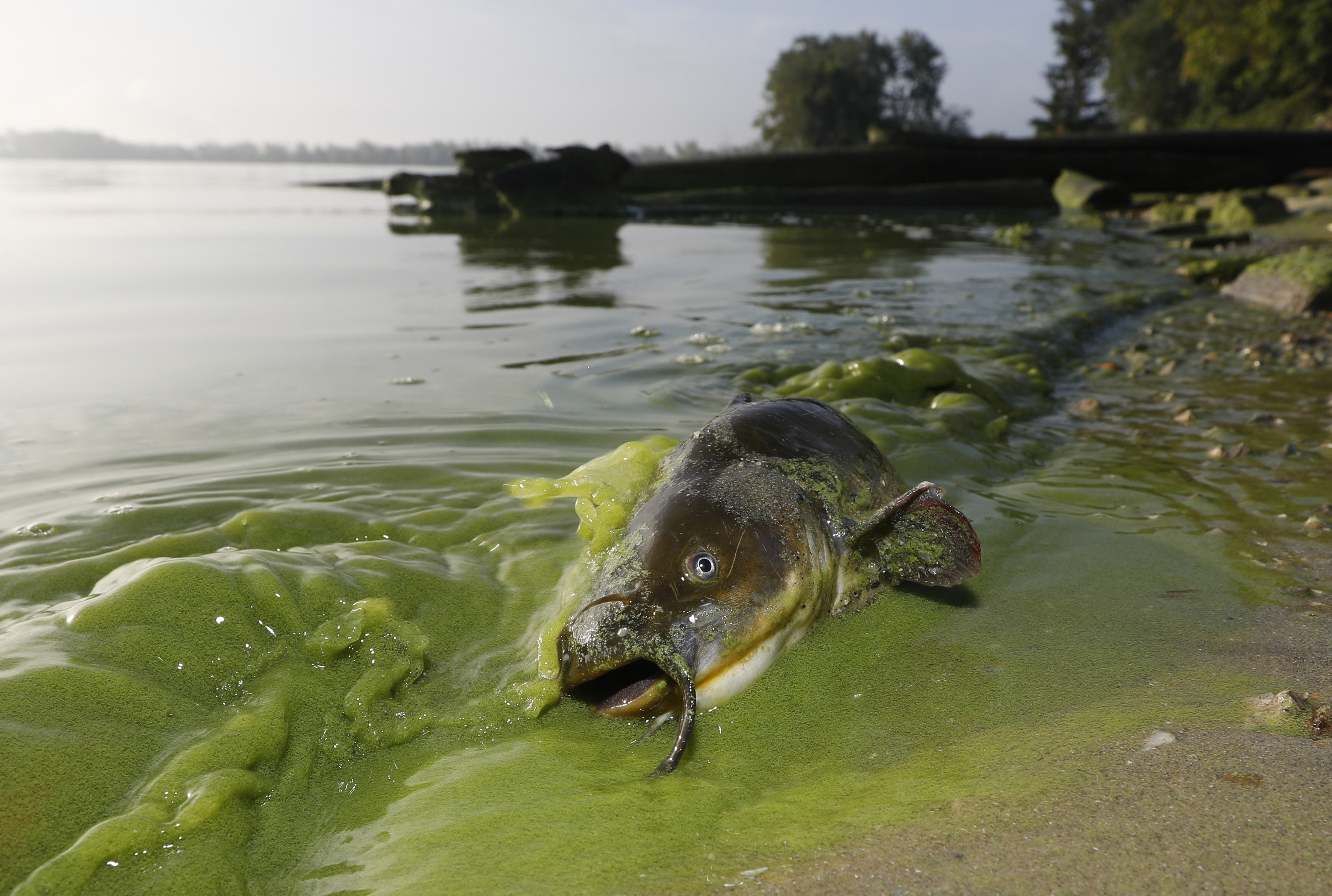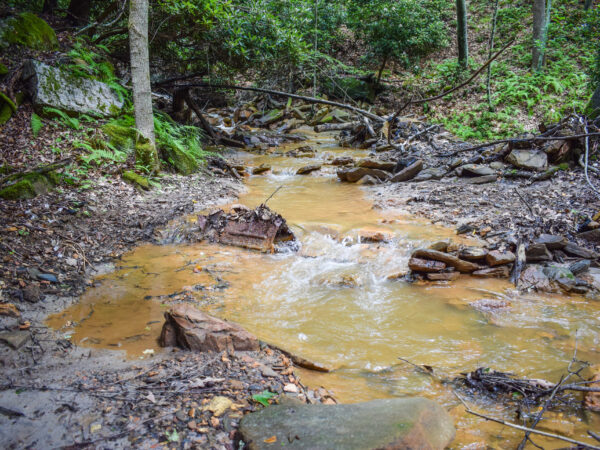
TOLEDO, Ohio (AP) — Nearly halfway into a 10-year pledge to combat the toxic algae that turns Lake Erie a ghastly shade of green, Ohio has made little progress. Its patchwork of mostly voluntary efforts hasn’t slowed the farm fertilizers that feed algae blooms, leading to contaminated drinking water and dead fish.
Ohio’s governor has authorized an ambitious plan that this year will begin offering farmers financial incentives to adopt new agriculture practices and will create a network of wetlands to capture and filter runoff from fields.
The broad approach is being watched closely by states struggling with an increasing number of algae outbreaks. Some environmental groups are skeptical, but others that have been at odds with the farming industry are hopeful.
While there are no guarantees the strategy will revive the shallowest of the Great Lakes, there are potential pitfalls, including a lawsuit calling for tougher regulations, that could upend the state’s goal of drastically reducing nutrient pollution entering the lake’s western end by 2025.
“We can’t move forward as a state unless we preserve Lake Erie,” Ohio Gov. Mike DeWine said when he announced plans to pay farmers to voluntarily participate, part of $172 million targeted for water quality.
One of the biggest hurdles is that the state must convince farmers to make changes without any certainty they will be enough. And no matter how many get on board, progress will be slow because phosphorus from chemical fertilizer and manure has built up for years.
Backers of the state’s plan worry that farmers could get discouraged and lawmakers may back away from committing more money if algae blooms continue to overwhelm the lake.
That’s why the state’s immediate focus is on convincing farmers in the western Lake Erie region to commit to some changes. “Our measure of success will be in how many farmers enroll in each county,” said Dorothy Pelanda, Ohio’s agriculture director.
They’ll begin finding out in February how the state intends to distribute $30 million worth of incentives and what the money will cover. That’s a big concern for those who’ve been hurt by depressed commodity prices, the trade war with China and one of the rainiest years in memory.
Nathan Eckel, who raises cattle and farms with his family just outside Toledo, said he and many neighbors already are doing several recommended practices, including planting cover crops and vegetation along streams and mixing manure into the ground.
“We’re doing what’s most time efficient and what’s best financially,” he said.
One of the state’s suggestions for reducing phosphorus runoff is to inject fertilizer into fields instead of on top, but that equipment costs close to $200,000. “How do you justify that coming off a year like we just had?” Eckel said.
What holds back others are lingering questions about whether the recommended steps are feasible and effective, said Robyn Wilson, a behavioral researcher at Ohio State University.
“I can’t blame the farmer,” she said. “Even those committed to it aren’t getting enough feedback.”
Surveys have shown that while up to 20% might not be willing to change, a larger share are open to new ways but face barriers, many of them financial.
“It’s a lot to accomplish in a short amount of time,” she said.
Ohio’s governor has said offering incentives is the key. “We cannot expect farmers to do things that will drive them out of business,” said DeWine, who first talked about long-term solutions just months after he took office a year ago.
States throughout the U.S. will be monitoring Ohio’s results because reducing nutrient pollution from farms has been a much bigger challenge than slowing it from sewage plants and factories, said Dan Obenour, an environmental engineer at North Carolina State University.
“In general, states are still trying to figure it out,” Obenour said.
Ohio’s leaders have been under pressure to fix the lake since algae toxins in 2014 left more than 400,000 people around Toledo unable to drink their tap water. Studies by have shown that roughly 85% of the phosphorus going into the lake comes from agriculture.
Many experts think the only way to reduce that is to order agriculture to make changes instead of relying on volunteers.
A federal lawsuit that could be ruled on this year is seeking to force Ohio to adopt enforceable regulatory standards. The state’s agriculture director said they’ll continue to move ahead with their plan, not knowing what will come from the courts.
There’s a sense of urgency because Ohio’s leaders say they’re committed to sticking with the previous administration’s promise to cut 40% of the phosphorus flowing into western Lake Erie within the next five years. If they fall short, the only choice may be tougher regulations that farmers have been trying to avoid.
Catch up on Great Lakes Now’s other news relating to Lake Erie’s algal blooms:
H2Ohio: Ohio governor’s plan puts $1 billion toward clean water and new wetlands
Lake Erie Algae: 2019 was bad but could have been worse
Understanding Algal Blooms: Conference reveals new projects, looks at Chesapeake Bay’s example
API key not valid. Please pass a valid API key.Featured image: In this Sept. 20, 2017, file photo, a catfish appears on the shoreline in the algae-filled waters of North Toledo, Ohio. (Andy Morrison/The Blade via AP, File)




